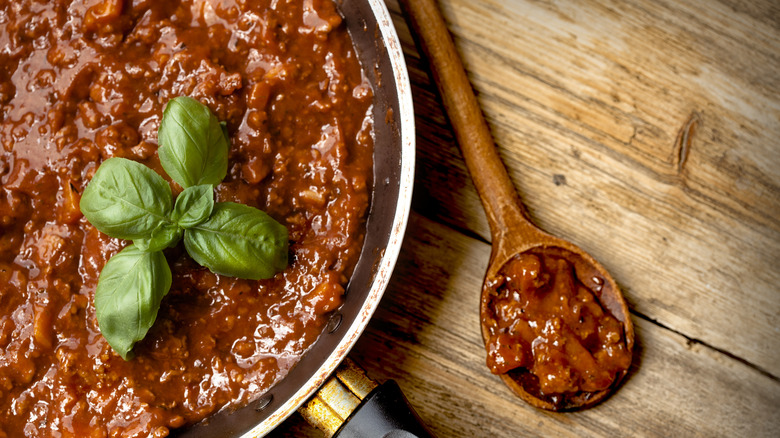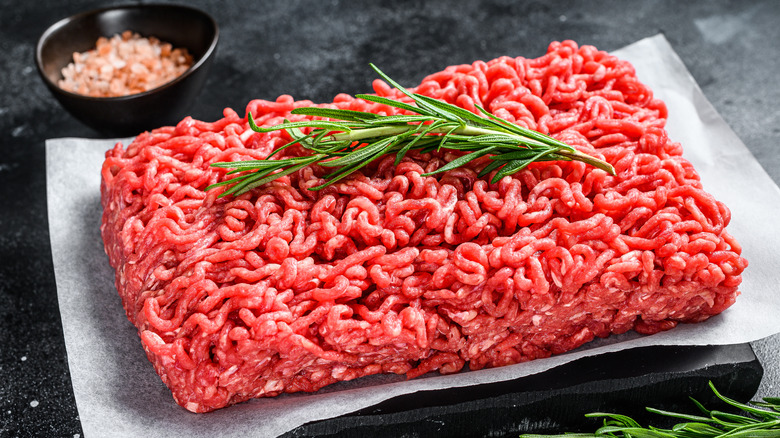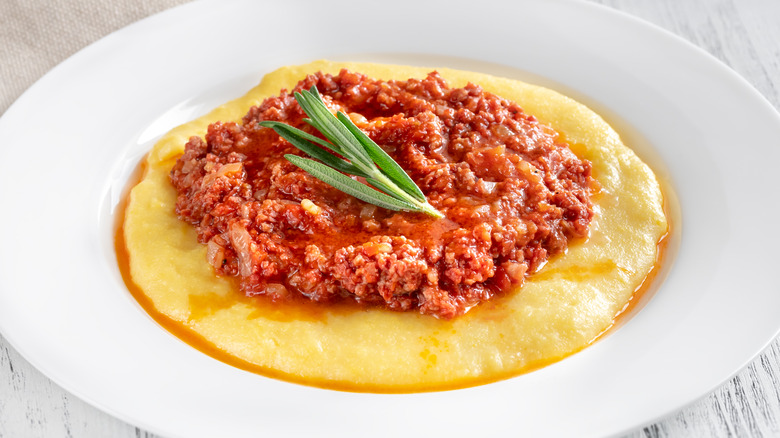The Best Meat-To-Fat Ratio For A Delicious Ragu
Ragù: a simple yet rich and filling sauce for pasta, made by simmering crushed tomatoes with hearty ground beef and pork and a medley of other delectable aromatics. Getting that ragù the perfect velvety consistency takes time and care, but it all starts with an important decision: what meat to put in the pot. Overall, you want about an 80/20 meat-to-fat ratio, regardless of your protein choice.
When cooking anything with ground meat, it's important to consider the meat-to-fat ratio. Fat content affects everything from the flavor to the texture of a finished dish; it can be the difference between a delectable, tender burger or meatball and a grease bomb (or a dried-up puck of meat). Getting that balance right is essential, but it can be a tricky line to walk, especially when different dishes require different levels of fat to ensure tenderness and flavor.
For ragù, the best ratio depends on how much pork you'll be putting in (pork typically has a higher fat content than beef). For a 50/50 mix of ground pork and ground beef, 90/10 ground beef works well, or even 100% lean.
Ragù's rich history
Ragù as a dish actually comes from the French "ragoût," a stew recipe typically featuring beef but that could be adapted to star other proteins as well, such as veal or chicken. When Napoleon's army brought the dish to Italy, ragoût became a popular dish among the wealthy seeking to bring French dishes to their dinner tables.
However, the ragù we know today stems from a particular recipe first documented many years later: "the Cardinal's ragù," created by Alberto Alvisi, who was the Cardinal of Imola's chef. The dish contained many of the same ingredients it does today: minced meat, tomato, onion, and various spices, including cinnamon (some ragù recipes still call for this, or nutmeg in exchange).
A good ragù is a long-simmered dish, cooked low and slow over hours to develop flavors and render the meat into tender morsels. An 80/20 meat-to-fat ratio makes this dish particularly rich and velvety.
Creative ways to use ragù
With a rich ragù finished and ready to eat, there are plenty of ways to use up that sauce without having to default to making pasta. Ragù tastes delicious served atop any number of starches, including (and perhaps especially) thick-simmered Italian polenta.
Need more ways to use up leftovers? Use the sauce as a filling for Sloppy Joe-like sandwiches, or stuff it into peppers along with extra vegetables and some rice (and, of course, a sprinkling of cheese). A good, well-seasoned ragù will taste delicious by itself, scooped up with homemade crusty bread or simply eaten with a spoon.
If you do decide to stick with the classic pasta, choose a flat, wide noodle, such as tagliatelle or pappardelle, which hold the thick sauce more easily. You can also choose short, tubular pasta, such as penne or rigatoni, which also serve as excellent sauce vessels.


